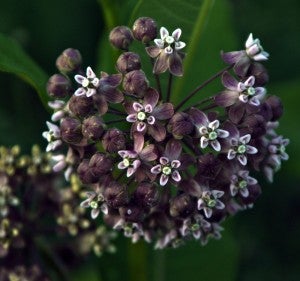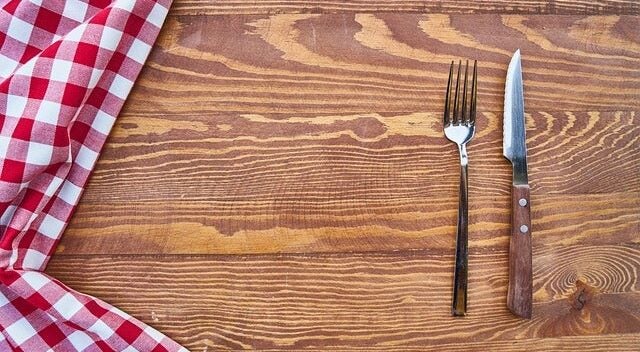Drama in the Milkweed Patch
Published 11:22 am Thursday, July 16, 2015
The common and swamp milkweeds bloomed last month. We all know that milkweed leaves are essential for the survival of monarch larvae — that’s all that they eat — and that the flowers are highly attractive to many pollinators, butterflies and bees during the day and moths and beetles in the evening. The dusky pink blooms of milkweed are especially fragrant and effective at attracting hungry guests. Conventional wisdom is that both flowers and pollinators benefit from an encounter – food in exchange for pollination.
Unfortunately, in this case, the cost of the visit by the pollinator can be higher than usual. Not all of the insects attracted to milkweed survive the encounter. Have you ever seen a milkweed bloom (actually a collection of 20 to 70 small blooms called an umbel) that was decorated with stray legs or an insect that was struggling mightily to free itself? Sounds odd, doesn’t it, but it’s actually rather common.
Milkweed isn’t carnivorous, but it does have a very unique method of pollination that sometimes results in the maiming or death of its pollinators. Each small flower within an umbel has five bright pink hoods with horns where the very sweet nectar is found. Between each hood is a long slit that serves as the perfect place for insects to place their feet when accessing the nectar. So far so good for the insects.
Unlike most other flowers, however, milkweed blooms don’t have tiny individual grains of pollen. The pollen grains are clumped together in tear drop-shaped, sticky sacs called pollinia. Each slit in a milkweed flower contains two pollinia, and they are relatively heavy. If the visiting insect’s leg happens to slip into one of these tiny openings, one or both pollinia will stick to it. And if the visitor is small or weak, it either sacrifices a leg or dies there.
A very sturdy bee can end up carrying a heavy load of pollinia, often as many as 10 since they’re only removed when the bee visits another milkweed and deposits them there. Studies show that, on average, pollinia stay on the mouth parts of bumblebees for slightly longer than a day; pollinia remain on the bee’s legs for roughly a quarter of a day. A bee laden with pollinia is 25 percent slower in foraging than one without them.
There are risks for both the milkweed and the pollinator. The odds aren’t great that successful pollination will occur, and there is a definite possibility that a visiting pollinator searching for sweet nectar won’t survive. And yet it all works. Only a few pollinated blooms are needed to produce lots of seeds.
Mother Nature’s garden is beautiful, but can be cruel too.







